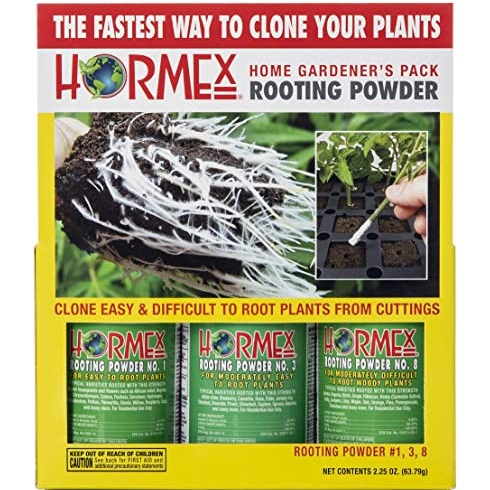Cuttings are a quick and cheap way to propagate plants. Most of us know that if you want to improve the chances that your plant roots successfully, you should use a rooting hormone. What if you run out or can’t get to the store? Try making a natural rooting hormone alternative.
You can easily buy this product at your local garden store but many people are choosing to make their own. The best part is, you can make it from materials that are probably already lying around your house.
What Are Rooting Hormones?
Natural rooting hormones present in plants are called auxins, and they’re made up of indole-3-acetic acid (IAA) or indole-3-butyric acid (IBA).
Synthetic rooting hormones that can be used to replicate the effects of natural auxins are alpha-Naphthalene acetic acid (NAA) and 2,4-dichlorophenoxyacetic acid (2,4-D). These encourage roots to form in the same way that natural auxins in the plant do.
Most plants will form roots naturally because that’s what the auxins in them are there to help with. But rooting hormones can help increase the number and strength of the roots, as well as shorten the time it takes them to form.
Woody cuttings tend to be more difficult to root, while softwood or herbaceous cuttings tend to root more easily, whether you use a hormone or not.
You can buy synthetic rooting hormones to encourage your cuttings to form roots. But sometimes you want to go the natural route. Or maybe you ran out of the synthetic stuff in the middle of planting cuttings. Maybe you just want to save money.
That’s when these natural rooting hormone alternatives come in handy.
Regardless of which of the solutions you use, it helps to poke a hole in the soil using a pencil or chopsticks. Then, dip the cut end of the plant in the rooting solution and insert it into the hole.
That way, less of the solution is displaced by the soil.
1. Apple Cider Vinegar
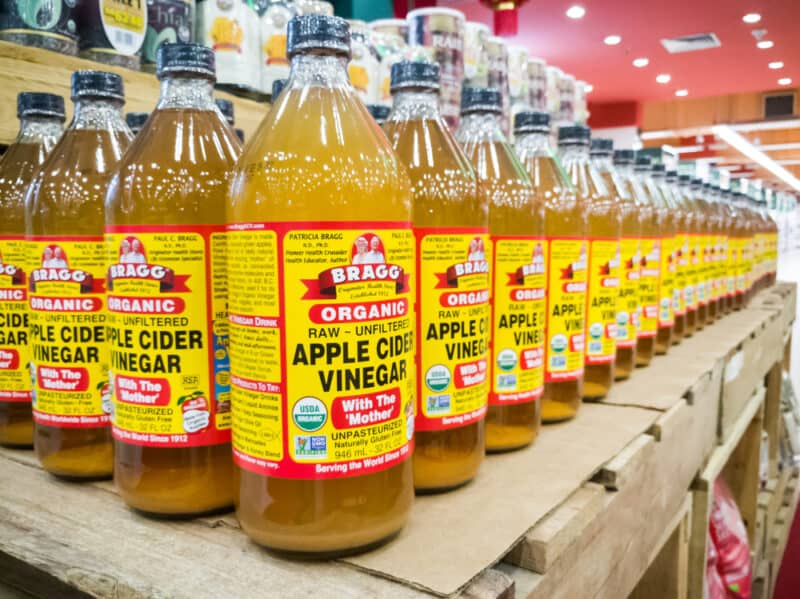
Apple cider vinegar contains naphthalene acetic acid, which has been shown in studies to be effective at encouraging rooting.
To make apple cider vinegar rooting hormone, combine:
- 3 teaspoons of apple cider vinegar
- 1 gallon of water
Dip your cuttings into the liquid and plant right away.

2. Cinnamon
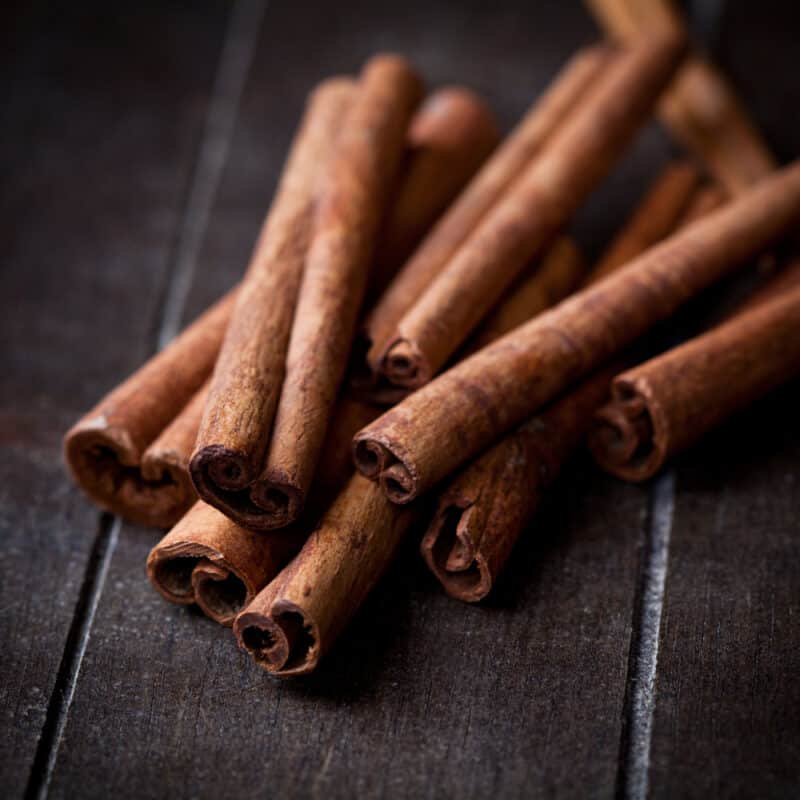
Did you know that cinnamon (the powder or essential oil from Cinnamomum verum) can kill bacteria and fungus? Studies show that the essential oil has powerful antibacterial and antifungal properties.
While this isn’t technically a rooting hormone, cinnamon helps cuttings survive by killing bacteria and fungus so the roots can develop. That’s what makes it an effective rooting hormone alternative (or even just a supplement to other options on this list).
Dip just the end of the cutting in one part cinnamon essential oil mixed with 10 parts water.
There are no studies showing the effectiveness of cinnamon powder on plants, but if you want to give it a try, all you need to do is sprinkle a small amount over the end of the cutting and plant the cutting in soil or a planting medium.
You can also make the hole in advance and sprinkle a little cinnamon in the hole.
3. Honey
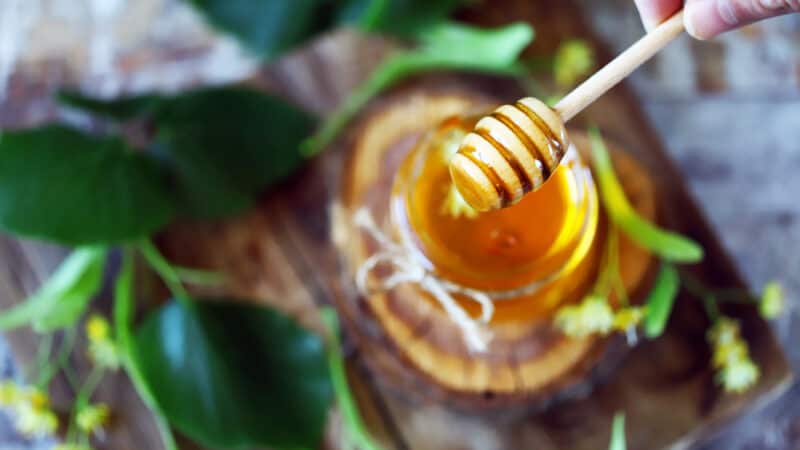
Honey isn’t a rooting hormone, but it makes an effective rooting hormone alternative (or addition) for several reasons.
In a study at the University of Hawaii, researchers found that cuttings of certain plants dipped in honey prior to planting rooted better, though it didn’t help all species of plants in the study. Another study found that unpasteurized honey worked best and had a good impact on root growth.
Honey is also known to have excellent antibacterial and antifungal properties, so it helps protect developing roots from bad pathogens.
Dip the end of the cutting in one part unpasteurized honey and four parts water to coat it and then plant as normal.
4. Aloe Vera
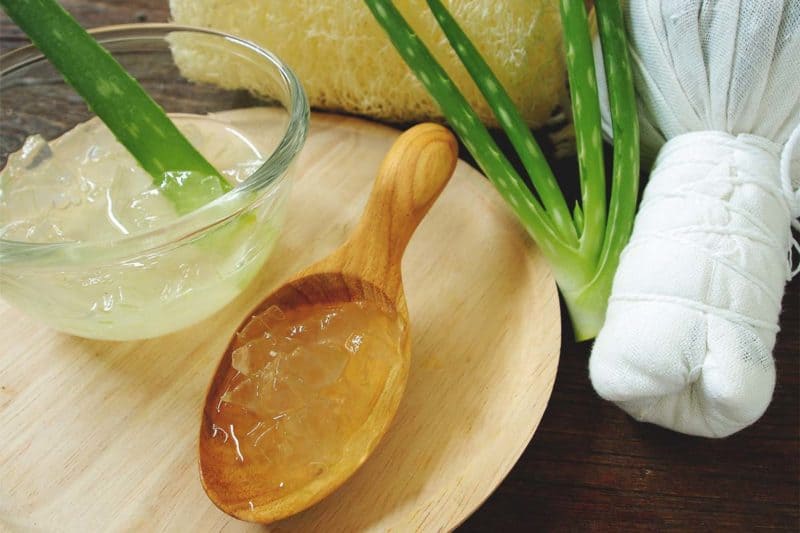
Growing an aloe vera plant indoors or out is notoriously simple, so you may already have easy access to aloe vera whenever you’d like. It’s also affordable to buy, and most people keep it on hand in their medicine cabinet.
Aloe vera is ideal as a rooting hormone alternative because it contains glucomannans, amino acids, sterols, and vitamins. Studies show that these help many types of species develop more and stronger roots when growing cuttings or propagating via air layering.
A different study showed a marked improvement with grapevine cuttings.
To use, dip the cutting end in the gel for two seconds. Then, plant as you would normally.
5. Coconut Water
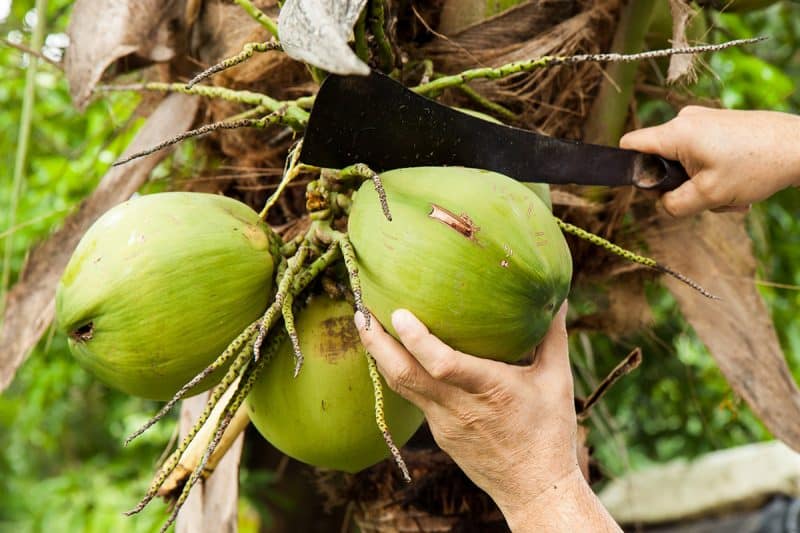
Coconut water is packed with auxins. That’s because a coconut is technically a seed (the world’s biggest). But unlike other seeds that fall or are carried from the parent plant into healthy soil for growing, coconuts have to survive in sand or for months as they float across the ocean to a new home.
To help them survive, coconuts contain auxins inside and a tough outer shell to protect them. They also have their own source of nutrients (the meat).
You can harness this ingenious system by dipping a cutting in fresh coconut milk. One study even found that coconut water works just as well as synthetic rooting hormones!
Another study showed a slight improvement in difficult-to-root Dracaena cuttings.
Don’t try to use canned or bottled coconut milk. It likely won’t have the same effect.
6. Vermicompost Tea
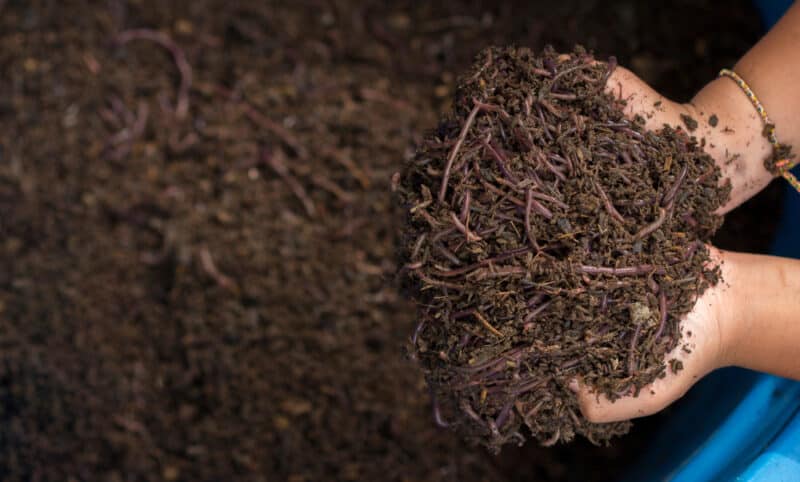
Worm poop is some pretty incredible stuff. On top of the many things it has going for it, which you can read about in our guide, it also has auxin-producing rhizobacteria. Studies confirm that vermicompost tea can improve root development.
Soak one gallon of vermicompost in four gallons of water for 48 hours. Strain the mixture and use the liquid as a rooting hormone alternative dip for your cuttings.
7. Hydrogen Peroxide
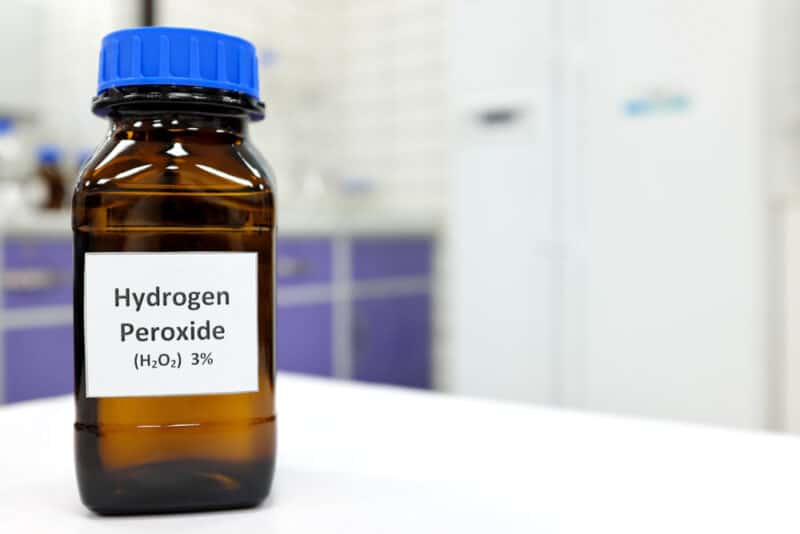
As with cinnamon and honey, hydrogen peroxide isn’t a rooting hormone. But it helps plants develop strong roots because it acts as a disinfectant, making it a handy rooting hormone alternative or addition.
Studies show that dipping an olive tree cutting in hydrogen peroxide increased rooting, which is notable since olive trees are hard to reproduce via cuttings.
Myth Busting
A quick internet search will reveal a lot of random things that gardeners suggest can be used as a rooting hormone alternative. But some of them simply aren’t backed by science. Let’s look at a few suggestions that don’t appear to work:
Aspirin
You may have heard of using aspirin as a rooting hormone. Don’t bother. While it might have a slightly positive effect, other studies show that it can have a negative effect. At best, it’s neutral. There are better options, so don’t waste your time with aspirin.
Willow Tea
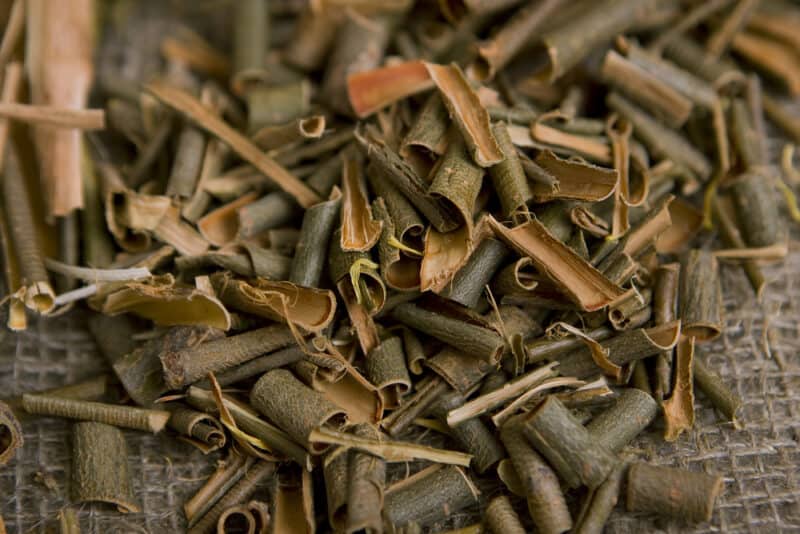
Willow tea has been used for years because of its pain-relieving properties. It contains salicylic acid, similar to the stuff (acetylsalicylic acid) that makes aspirin effective. Willow trees are also particularly rich in the auxin hormones IBA and IAA, which we know help new roots develop.
But as with aspirin, the science on whether willow tea helps with rooting is lacking.
To begin with, IBA and IAA aren’t very soluble in water, so a water-based solution made using willow is going to be weak.
One study using cannabis showed no benefit. One study on apple cuttings showed a slight increase in rooting. Olive cuttings rooted the same or slightly better, depending on the part of the willow plant that was used to make the soak.
While it might have a slight impact on rooting, it certainly doesn’t work as well as commercial rooting powders or the rooting hormone alternatives listed above. If you want to give it a try anyway, use the bark and soak the bark in water for at least 72 hours.
Saliva
Humans have been using saliva for years as a rooting hormone alternative. While little research has been done on its effectiveness, the research that has been done indicates that it isn’t effective.
A 1948 study looked at saliva and blood and found no improvement in rooting. Another looked at animal saliva and its impact on plant re-growth for plants that were consumed by the animals (rather than cuttings that were dipped in saliva and planted). This study had mixed results.
How to Use Rooting Hormone Alternatives
You should always make sure your cuttings are fresh and the wound is clean. Cut below a leaf joint where there are already existing plant auxins. Next, remove any leaves from the lower part of the plant.
Make sure to pour your rooting hormone alternative into a sterile container before applying it.
You can use a cloche or a plastic bag to cover the growing pot as this will help lock the moisture in. Cuttings don’t retain moisture well, so this is a good way to ensure the moisture stays inside. Here are a few more tips:
- Remove cuttings in the morning when they’re full of moisture
- Reduce the size of large leaves by cutting them
- Add heat for better growth
Pros & Cons of Synthetic Rooting Hormones
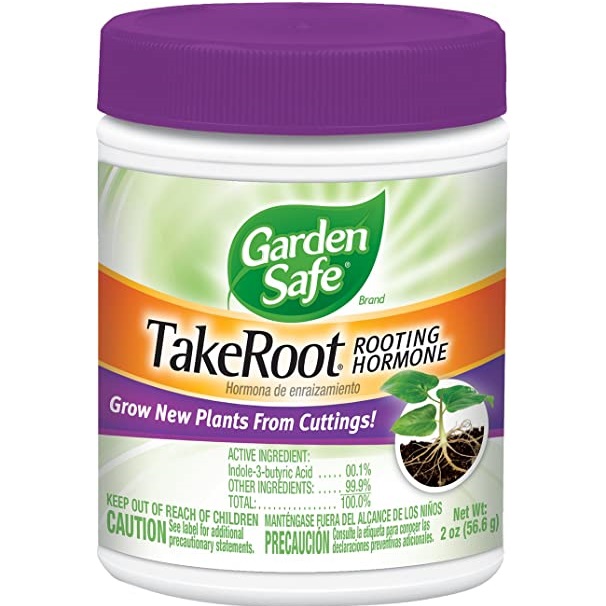
Undeniably, a major advantage of synthetic rooting hormones is the reduced growing time. The less time it takes, the less stress your plant goes through. Plus, you’ll see more and healthier roots.
Additionally, after you’ve applied the rooting hormone, it can last up to three months.
The drawback is that rooting hormones can potentially be toxic to humans or pets if inhaled or ingested. They also cost money and may not fit into an organic gardener’s strategy.
On top of that, manufacturing synthetic products can have a major impact on the environment. Natural options are safe, affordable, and organic.
The downside to using natural rooting hormone alternatives on your plants is that there isn’t much science showing them to be effective.
We know synthetic hormones work well, but though we have some scientific evidence, there needs to be more research proving that natural alternatives are as effective.
That doesn’t mean you shouldn’t use them, of course. Let your own experience be your guide. If you find that your cuttings do much better when you sprinkle cinnamon in the hole, go for it!
I HAVE ROOT HORMONE POWDERS FOR SALE, BUT MAYBE USE DIY
I ALSO HAVE A VARIETY ON ALOE VERA PLANTS FOR SALE AS WELL
Any questions or if buying, contact me HERE


